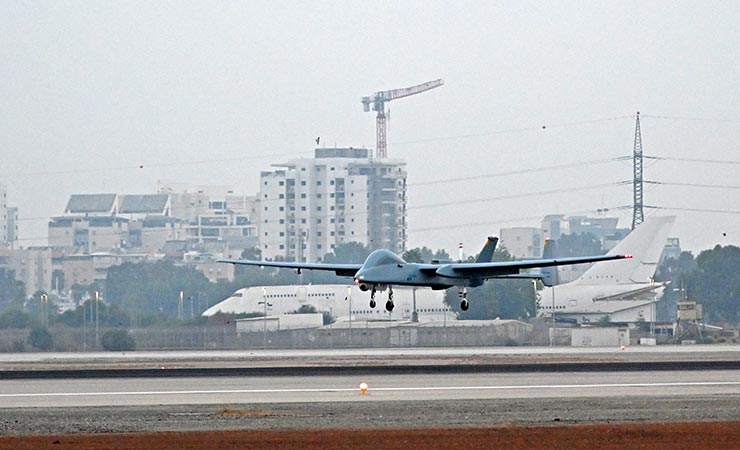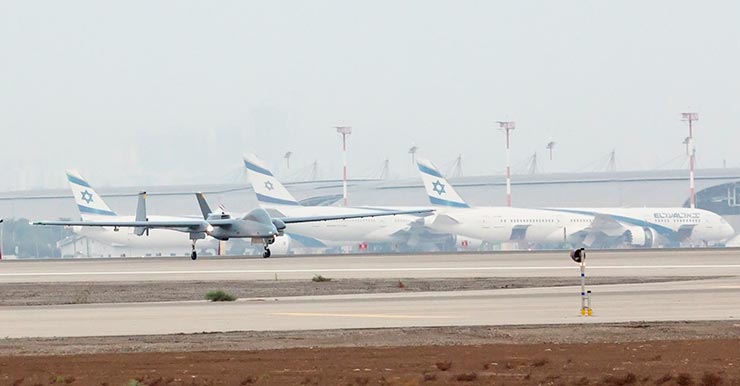
Tel Aviv. Israel Aerospace Industries (IAI) recently signed a US$ 200 million contract to provide unmanned aerial systems (UAS) services to India, that operates the Israeli company’s Heron-1 UAS.
Earlier this year India purchased and leased four Heron MK II UAS systems from IAI. India has shown great interest in the IAI Heron TP strategic UAS and may lease or purchase some more. The contract includes maintenance and upgrades to the Heron-1 operated by the Indian armed forces. This is the fourth major UAS transaction that IAI has announced this year.
The Heron family leads IAI’s range of UAS. The various Heron models are used regularly for operational missions by over 20 customers worldwide. Controlled remotely from sea frigates or the seashore, the Heron supports ground and maritime missions against submarines and coastal guards. It transmits information while at sea, including between all the weapon systems participating in a mission. The Heron UAS may be fitted with LOS or SATCOM communication, and features “long runner” operational flexibility with automated remote take off, landing, and control with no need for deploying a control post near the runway.
IAI President and CEO, Boaz Levi, said, “The deal is a testament to our customers’ strong satisfaction with the Heron UAVs, including their operational and technical performance. Our customers repeatedly choose the Heron for its broad range of intelligence collection missions in different ground and weather settings.”

IAI’s UAS know-how and experience have been accumulated over nearly 50 years, representing two million aggregate flight hours and over 50 customers worldwide. This expertise is in addition to IAI’s service as a centre for national and global technological know-how in the areas of air defence, radar systems, satellites, remotely piloted vehicles, assault missiles, aviation, and cyber.
IAI keeps upgrading its existing range of UAS. Only recently as reported by Raksha Anirveda the Heron MK II was fitted with an upgraded engine and improved avionics. The Heron MK II reaches an altitude of 35,000 feet, maximum speed of 140 knots, and can stay in the air for up to 45 hours. Thanks to improved production technologies, the Heron MK II has a wider and stronger chassis enabling quick and easy maintenance without affecting the UAV’s net weight. The UAS enables the use of new configurations and has a long-range reconnaissance sensor and radar. It can carry a range of additional payloads like COMINT and ELINT equipment.
The UAS outstanding characteristic is its standoff capability, i.e. the capability of gathering intelligence on targets from a long distance (dozens of miles) with no need to cross borders, thanks to its ability to carry larger, improved sensors. In addition, the Heron MK II boasts improved avionics and an improved and reinforced engine. The Heron MK II UAVs can land on any airstrip and can manoeuvre under extreme weather conditions.
-The writer is an International Roving Correspondent of the publication.








